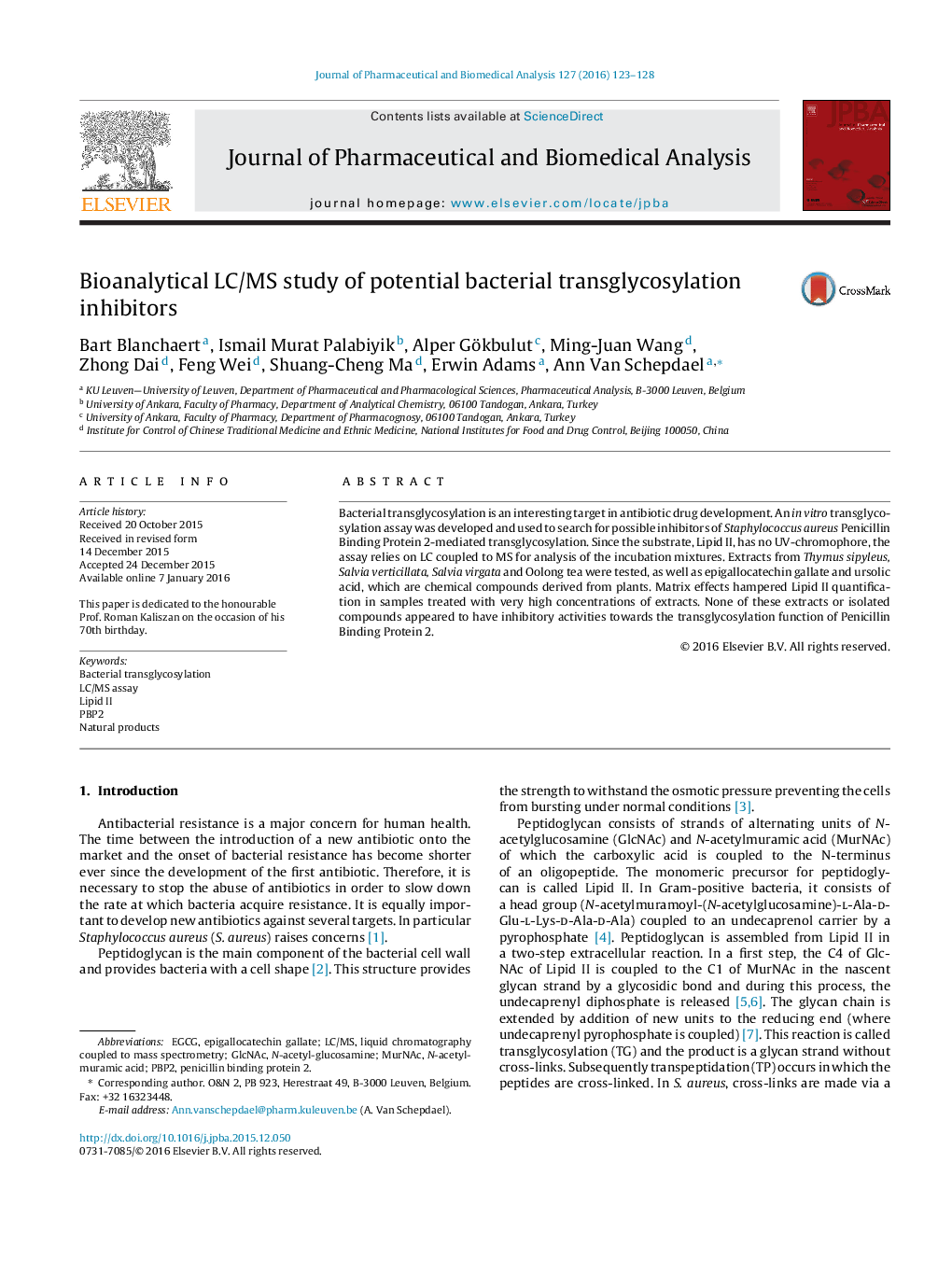| Article ID | Journal | Published Year | Pages | File Type |
|---|---|---|---|---|
| 1220920 | Journal of Pharmaceutical and Biomedical Analysis | 2016 | 6 Pages |
•LC coupled to MS was applied in an in vitro bacterial transglycosylation assay.•Potential new inhibitors of transglycosylation were investigated.•Thymus, Salvia, Camellia species and epigallocatechin gallate and ursolic acid were tested.•Fast, easy and reliable assay for future testing of transglycosylation inhibitors.
Bacterial transglycosylation is an interesting target in antibiotic drug development. An in vitro transglycosylation assay was developed and used to search for possible inhibitors of Staphylococcus aureus Penicillin Binding Protein 2-mediated transglycosylation. Since the substrate, Lipid II, has no UV-chromophore, the assay relies on LC coupled to MS for analysis of the incubation mixtures. Extracts from Thymus sipyleus, Salvia verticillata, Salvia virgata and Oolong tea were tested, as well as epigallocatechin gallate and ursolic acid, which are chemical compounds derived from plants. Matrix effects hampered Lipid II quantification in samples treated with very high concentrations of extracts. None of these extracts or isolated compounds appeared to have inhibitory activities towards the transglycosylation function of Penicillin Binding Protein 2.
